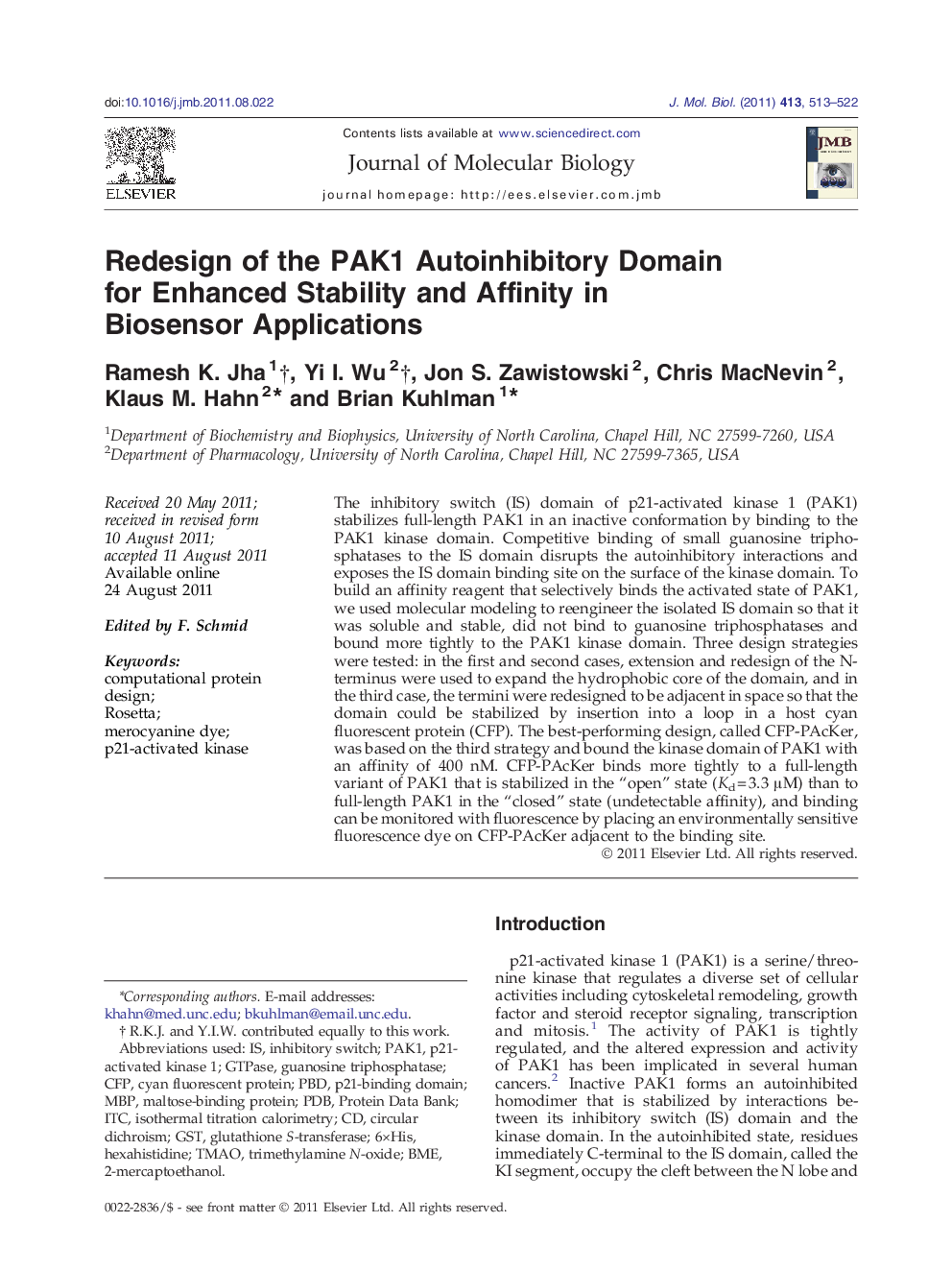| کد مقاله | کد نشریه | سال انتشار | مقاله انگلیسی | نسخه تمام متن |
|---|---|---|---|---|
| 2184802 | 1095930 | 2011 | 10 صفحه PDF | دانلود رایگان |

The inhibitory switch (IS) domain of p21-activated kinase 1 (PAK1) stabilizes full-length PAK1 in an inactive conformation by binding to the PAK1 kinase domain. Competitive binding of small guanosine triphosphatases to the IS domain disrupts the autoinhibitory interactions and exposes the IS domain binding site on the surface of the kinase domain. To build an affinity reagent that selectively binds the activated state of PAK1, we used molecular modeling to reengineer the isolated IS domain so that it was soluble and stable, did not bind to guanosine triphosphatases and bound more tightly to the PAK1 kinase domain. Three design strategies were tested: in the first and second cases, extension and redesign of the N-terminus were used to expand the hydrophobic core of the domain, and in the third case, the termini were redesigned to be adjacent in space so that the domain could be stabilized by insertion into a loop in a host cyan fluorescent protein (CFP). The best-performing design, called CFP-PAcKer, was based on the third strategy and bound the kinase domain of PAK1 with an affinity of 400 nM. CFP-PAcKer binds more tightly to a full-length variant of PAK1 that is stabilized in the “open” state (Kd = 3.3 μM) than to full-length PAK1 in the “closed” state (undetectable affinity), and binding can be monitored with fluorescence by placing an environmentally sensitive fluorescence dye on CFP-PAcKer adjacent to the binding site.
Graphical AbstractFigure optionsDownload high-quality image (161 K)Download as PowerPoint slide
Journal: Journal of Molecular Biology - Volume 413, Issue 2, 21 October 2011, Pages 513–522